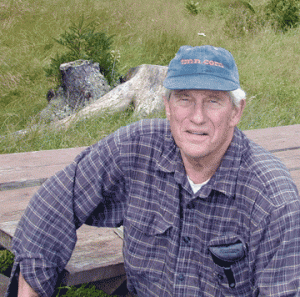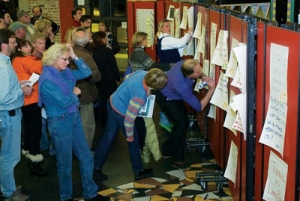Back in 2008 the Health Department hosted a day-long community consultation forum, seeking input on the following question: ‘What can we ALL do to better the mental health of ALL West Australians?’
My interest in the event was three-fold:
- As a communications practitioner, I wanted to observe the technical aspects – how the forum was run, what worked, what could be improved.
- As a stakeholder, I have a keen interest in mental health. Like many of us, close friends, ex-partners, work colleagues, have had engagement with the mental health ‘system’ at one time or another. Some of those people have travelled down the dark tunnel of addiction and/or psychosis. Some of them are now dead. So I’ve had opportunities to observe those engagements and form some opinions.
- The forum was exactly two weeks before the birth of my beautiful daughter. In the approach to parenthood, I developed a strong interest in factors contributing to strength of character and personality. We’ve all witnessed the phenomenon where two children grow up with similar parenting, similar background, similar experiences, but when they hit their teens and start to face some of life’s challenges, one learns to deal with those challenges and grows, while the other goes off the rails. I wanted to understand why this happens so I could be a better parent and help my daughter develop the resilience and coping skills she needs to tackle the challenges ahead.
The first observation from the day was the skill with which the facilitator, Brendan McKeague, used the self-organising skills of the attendees to do his job for him. Mr McKeague was using a technique known as ‘Open Space Technology’, which was invented or ‘discovered’ by Harrison Owen, when he realised the best parts of every conference are the breaks and mixers, where participants seek each other out for informal discussions.
Mr McKeague began with an observation: each person in the room cared enough about the subject to make an effort, and take time out of their schedule to attend the workshop. Each one of us had some powerful thought that motivated us to show up that day.
So the point of the exercise was to draw those thoughts out of our heads and to share them with the group.
McKeague established a number of designated spaces for conversations to take place. He established four timeslots for conversations to take place, two before lunch, two after lunch.
In the middle of the room he placed butchers paper and a microphone. On the wall was a grid where we could book a conversation space and a timeslot. To convene a conversation, we had to write the subject on a piece of butchers paper, talk briefly about our subject on the microphone, then go to the wall, book a timeslot and a space, and stick the whole lot up where everyone could see it.
The wall became a ‘marketplace’ for ideas and conversations. This list of what conversations would be happening, where they would happen and when became the ‘agenda’ for the workshop. Each group was also responsible for recording the key points of the discussion and recommendations to create a ‘book of proceedings’.
Then all we had to do was decide which conversations we wanted to be part of.
The whole exercise was underpinned by the four guiding principles of Open Space:
1. whoever comes are the right people
2. whatever happens is the only thing that could have happened.
3. when it starts is the right time
4. when it’s over it’s over
and the ‘Law of Two Feet’: If at any time you find yourself in any situation where you are neither learning nor contributing: use your two feet and go someplace else.
Bearing in mind my self-appointed dual role as technical observer and participant, I could have remained detached from the proceedings, but I chose to jump in and convene a discussion because:
- it would have been disrespectful not to match the level of passion and commitment from the other participants
- we always learn more when we push ourselves out of our comfort zone
- sometimes the best way to really learn how something works is to immerse in the experience and see what happens.
Pitching a conversation in the ‘idea marketplace’ was scary. I didn’t know anyone else there that day. I had no idea if anyone would be interested in my idea. What if no one showed up?
I needn’t have worried. People were interested. They roamed from space to space, observing, learning and sharing their experiences.
What amazed me was how well it worked. More than 70 conversations took place and, from what I saw, each one attracted roughly 5-20 participants.
I saw people make a real effort to engage with each other, listen to each other, respect each other, encourage and tease out dissenting views.
For me, the first wonderful insight came from Mr McKeague very early in the day. After the introductory session in the morning, where McKeague made sure we all understood the process, he left. Quite literally, he walked out and left us all to it.
As always, actions speak louder than words. McKeague’s actions very clearly communicated his confidence in the four guiding principles of Open Space. The participants were empowered to take control of the day, without any hovering authority to appeal to for guidance or support or judgement.
Open Space is just one example of ‘organisational judo’ (or, if you prefer, ‘organisational permaculture’), harnessing the power of a pre-existing trend or organising principle to achieve a result, without a lot of difficult pushing against the tide.
More on mental health: Part 1 [Part 2] [Part 3] [Part 4]
To learn more about the details of Open Space, check the links below.
http://www.openspaceworld.com – Harrison Owen’s Open Space pages
http://www.openspaceworld.org – resources for Open Space practitioners
http://uvic.commonenergy.org/wiki/Open_Space_Technology – Open Space wiki hosted by the Common Energy network
http://workforcefanatic.typepad.com/bamboo_us/2006/12/an_open_space_r.html – Open Space reading list by Michele Martin
http://en.wikipedia.org/wiki/Open_Space_Technology – nuff said



Pingback: Complex adaptive systems, fractals and Gaia | Jonathan Smith
Pingback: Mental health part two – supply and demand | Jonathan Smith
Pingback: Mental health part three – “help is the sunny side of control” | Jonathan Smith
Pingback: Mental health part four – ideas | Jonathan Smith
What’s up, I check your new stuff on a regular basis. Your story-telling style is witty, keep it up!
I need to to thank you for this great read!!
I certainly enjoyed every bit of it. I have got you book marked to check out new stuff you post…